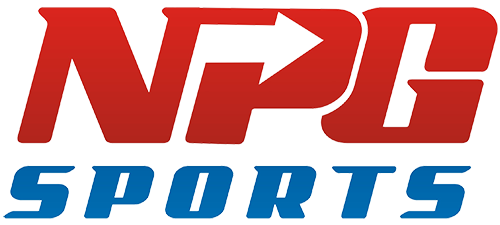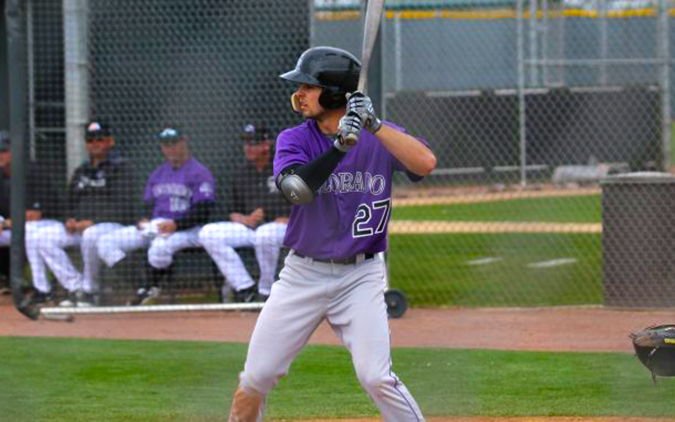During a year in which many Rockies prospects had their share of struggles, Terrin Vavra stood out by taking a step forward during his first taste of full season ball. The 22-year-old middle infielder came to the Rockies as a 3rd rounder in 2018, signing for a slot bonus of $550k after a breakout year at the University of Minnesota that earned him All-American honors. It was the first full season as a collegiate player for the 6’1” lefty hitter, righty thrower, who had suffered through a stress fracture in his back his first two years in Minnesota.
Vavra had the reputation of a player with an advanced feel for hitting and he displayed it immediately in his debut season with Short Season A Boise: his .302/.396/.467 line was good for a 142 wRC+. The Rockies moved him up one level to Low A for 2019, where Vavra proved again that he could handle low minors pitching.
In 453 plate appearances with Asheville, Vavra was a cut above the competition. He hit .318/.409/.489 with 43 extra base hits (10 HR) and went 18/27 in steal attempts, good for a 160 wRC+ and the South Atlantic League MVP award (the 3rd Asheville player in 4 years to be so honored) before getting shut down in August for an injury. Notably, Vavra struck out and walked at the same 13.7% clip during his MVP season. Defensively, Vavra split his time between SS (53 games, 12 errors) and 2B (41 games, 4 errors).
While those numbers are great, there are two important contextual items that need to be mentioned. First is that Asheville is a great home park for left-handed hitters and Vavra took full advantage: Vavra’s monster 1.124 home OPS dwarfed his pedestrian .636 road OPS. Secondly, Vavra was 0.5 years older on average than the competition in the SAL, while normally highly ranked prospects are younger than league average. The mitigating factor here is that fellow PuRP Ryan Vilade was holding down the fort with aplomb in High A, perhaps slowing Vavra’s promotion trajectory. Either way, it will be important for Vavra to show the same level of production at higher levels against more advanced prospects.
Vavra was ranked 4th in the system by Baseball Prospectus with a 50 OFP, listing him at SS. Here’s Jeffrey Paternostro on Vavra:
Vavra is a polished offensive contributor with enough glove to stick up the middle. In his first full professional season, he showed good control of the zone and the barrel, with a simple, relatively flat swing plane that hit line drives to all fields. There is some pull-side power in the profile, although almost all of Vavra’s 2019 pop came at home with the short right field porch in Asheville. Given his size and swing, the power is more likely to play in the 10-15 home run range, albeit along with a potentially plus hit tool. On the dirt, Vavra is rangy enough for shortstop, but his arm strength might limit him to the right side of the infield.
FanGraphs ranked Vavra 6th in the system with a 45 FV grade, where he was listed at second base:
He’s a patient hitter with an athletic swing who gets the most out of his slight build without often compromising his feel for contact. His swing is kind of grooved, but Vavra is a pitch selection savant, adept at picking out pitches he can drive until he has to expand with two strikes. We think he’s going to hit, have doubles power, and reach base at an above-average clip. That could play every day at shortstop, but we think Vavra is much more likely to end up at second base, where his range could make him an above-average defender. There’s not enough power for an impact regular here, but the athleticism and feel for contact should make Vavra either a low-end regular on the middle infield or a valuable, multi-positional role player.
Finally, MLB.com currently places Vavra 7th in the system:
Put simply, Vavra just hits wherever he goes. Utilizing a short stroke from the left side of the plate, he always stays within himself, focusing on using the middle of the field. The result is line drives to all fields, consistently professional at-bats with a strong strikeout-to-walk ratio, and some sneaky extra-base authority. On the other side of the ball, Vavra is a steady, but not flashy, defender who makes all the plays from multiple positions. He can handle shortstop, but his arm and range might not be a fit to be a regular there. He plays a very good second base as well.
The Rockies love infielders with positional flexibility, and Vavra will mix some third base in as he moves forward. Some in the organization compare him favorably to fellow infield prospect Garrett Hampson, without as much speed, with the competitiveness and makeup similar to, but with more offensive potential, another Rockie infielder, Pat Valaika.
A slower Garrett Hampson and/or a better Pat Valaika is not a bad outcome for the Rockies with Vavra. Both he and Hampson were third round picks, while Vavra and Valaika both come from baseball families and major conferences; all three were given plus grades for their make-up as prospects.
I think, like Hampson and Valaika, Vavra is on the fast track to the big leagues in some capacity (starting 2020 in High A and finishing it in AA is my prediction), with the bat and opportunity sorting out what level of impact he’ll have. It might not be as a big league regular given the present skill-set, but if the hit tool continues to impress when he faces higher-level pitching I will remove that caveat as well. I placed Vavra 6th on my personal ballot with a FV 45 grade as an advanced hitter with plus make-up who has a high floor.
The original article written by Jeff Aberle can be found here:
https://www.purplerow.com/2020/2/10/21128338/colorado-rockies-prospects-preseason-2020-no-7-terrin-vavra

